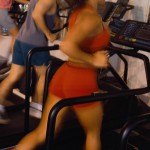 Is medical clearance to exercise really necessary?
Is medical clearance to exercise really necessary?
“Obtain a doctors approval before beginning an exercise program.” We’ve all read this, heard this and seen this advisory many times, does it still need to be taken seriously? Yes. Absolutely. 100 percent. Why is medical clearance to exercise or activity in general so important? It’s important for several reasons:
Firstly, things change. We change. Bodies change. Our biology and body chemistry changes. Medical conditions change. It’s important to check in with your medical professional before beginning a new activity, as well as before increasing activity because our health (internal, as well as external health) status may have changed since our last visit. For most of the general population, it’s important to re-evaluate our health status at least once a year. For example, maybe your blood pressure was never an issue in the past. However, with a more sedentary job, higher daily stress and poor nutrition choices due to long work hours your blood pressure could now be elevated. High blood pressure is an example of compromised health that often goes undetected in the early stages, but is considered a serious health risk.
Secondly, generalizations are exactly that, generalizations. For example, youth does not automatically mean healthy. Skinny doesn’t always mean healthy. Another example; competitive athlete doesn’t always mean healthy. Likewise, an avid exerciser doesn’t always mean automatically healthy. Each individual should pursue and manage his or her health as an individual.
Thirdly, underlying conditions can be swept under the rug or disregarded as a symptom of mileage, hard workouts or heavy weights. Heavy exercisers may often feel fatigue, aches and soreness, so if something new arises there is less likely the chance the new symptom will be noticed and therefore tended to. For example, heavy lifting can make us sore in our upper back, neck and chest muscles. However, chest pain, neck and/or upper back pain can also be symptoms of cardiovascular issues.
Re-evaluating our health status is an important component of managing our overall wellness program. Doing so also allows us to tend to issues before they become serious. It’s not a matter of being paranoid; it’s a matter of simply being aware. If something feels off with your body, pursue it. Next time you see, read or hear the phrase “seek medical clearance before beginning an exercise program or activity” take it seriously. In fact, there’s no argument not to. Every smart exerciser is constantly re-evaluating how they feel and how their body is working. Checking in with medical professionals is just another way of managing our wellness.
 Subscribe
Subscribe







